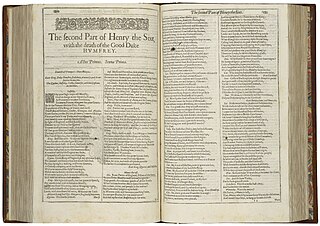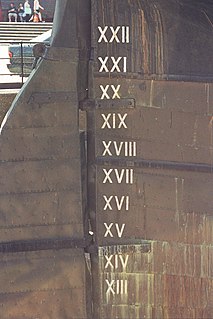
A primary school is a school for children from about five to eleven years old, in which they receive primary or elementary education. It can refer to both the physical structure (buildings) and the organisation. Typically it comes after preschool, and before secondary school.
Lord Protector is a title that has been used in British constitutional law for the head of state. It is also a particular title for the British heads of state in respect to the established church. It is sometimes used to refer to holders of other temporary posts, for example, a regent acting for the absent monarch.

The National Defense Education Act (NDEA) was signed into law on September 2, 1958, providing funding to United States education institutions at all levels.

Title IX is a federal civil rights law in the United States of America that was passed as part of the Education Amendments of 1972. This is Public Law No. 92‑318, 86 Stat. 235, codified at 20 U.S.C. §§ 1681–1688. It was co-authored and introduced by Senator Birch Bayh in the U.S. Senate, and Congresswoman Patsy Mink in the House. It was later renamed the Patsy T. Mink Equal Opportunity in Education Act following Mink's death in 2002. The following is the original text as written and signed into law by President Richard Nixon in 1972:

Henry VI, Part 1, often referred to as 1 Henry VI, is a history play by William Shakespeare—possibly in collaboration with Christopher Marlowe and Thomas Nashe—believed to have been written in 1591. It is set during the lifetime of King Henry VI of England.

Henry VI, Part 2 is a history play by William Shakespeare believed to have been written in 1591 and set during the lifetime of King Henry VI of England. Whereas 1 Henry VI deals primarily with the loss of England's French territories and the political machinations leading up to the Wars of the Roses, and 3 Henry VI deals with the horrors of that conflict, 2 Henry VI focuses on the King's inability to quell the bickering of his nobles, the death of his trusted adviser Humphrey, Duke of Gloucester, the rise of the Duke of York and the inevitability of armed conflict. As such, the play culminates with the opening battle of the War, the First Battle of St Albans.

Henry VI, Part 3 is a history play by William Shakespeare believed to have been written in 1591 and set during the lifetime of King Henry VI of England. Whereas 1 Henry VI deals with the loss of England's French territories and the political machinations leading up to the Wars of the Roses and 2 Henry VI focuses on the King's inability to quell the bickering of his nobles, and the inevitability of armed conflict, 3 Henry VI deals primarily with the horrors of that conflict, with the once stable nation thrown into chaos and barbarism as families break down and moral codes are subverted in the pursuit of revenge and power.

The Violent Crime Control and Law Enforcement Act of 1994, H.R. 3355, Pub.L. 103–322 is an Act of Congress dealing with crime and law enforcement; it became law in 1994. It is the largest crime bill in the history of the United States and consisted of 356 pages that provided for 100,000 new police officers, $9.7 billion in funding for prisons and $6.1 billion in funding for prevention programs, which were designed with significant input from experienced police officers. Sponsored by Representative Jack Brooks of Texas, the bill was originally written by Senator Joe Biden of Delaware and then was passed by Congress and signed into law by President Bill Clinton.
The precise style of British sovereigns has varied over the years. The present style is officially proclaimed in two languages:

The Elementary and Secondary Education Act (ESEA) was passed as a part of United States President Lyndon B. Johnson's "War on Poverty" and has been the most far-reaching federal legislation affecting education ever passed by the United States Congress. The act was an extensive statute that funded primary and secondary education. It also emphasizes equal access to education and establishes high standards and accountability.

The Civil Rights Act of 1960 is a United States federal law that established federal inspection of local voter registration polls and introduced penalties for anyone who obstructed someone's attempt to register to vote. It was designed to deal with discriminatory laws and practices in the segregated South, by which blacks and Mexican Texans had been effectively disfranchised since the late 19th and start of the 20th century. It extended the life of the Civil Rights Commission, previously limited to two years, to oversee registration and voting practices. The act was signed into law by President Dwight D. Eisenhower and served to eliminate certain loopholes left by the Civil Rights Act of 1957.

The Improving America's Schools Act of 1994 (IASA) was a major part of the Clinton administration's efforts to reform education. It was signed in the gymnasium of Framingham High School (MA). It reauthorized the Elementary and Secondary Education Act of 1965.
The Internal Revenue Code (IRC), formally the Internal Revenue Code of 1986, is the domestic portion of federal statutory tax law in the United States, published in various volumes of the United States Statutes at Large, and separately as Title 26 of the United States Code (USC). It is organized topically, into subtitles and sections, covering income tax, payroll taxes, estate taxes, gift taxes, and excise taxes; as well as procedure and administration. Its implementing agency is the Internal Revenue Service.

India was an independent dominion in the British Commonwealth of Nations with King George VI as the head of state between gaining independence from the United Kingdom on 15 August 1947 and the proclamation of a republic on 26 January 1950. It was created by the Indian Independence Act 1947 and was transformed into the Republic of India by the promulgation of the Constitution of India in 1950.
The Office for Civil Rights (OCR) is a sub-agency of the U.S. Department of Education that is primarily focused on enforcing civil rights laws prohibiting schools from engaging in discrimination on the basis of race, color, national origin, sex, disability, age, or membership in patriotic youth organizations.

The Higher Education Act of 1965 (HEA) was legislation signed into United States law on November 8, 1965, as part of President Lyndon Johnson's Great Society domestic agenda. Johnson chose Texas State University, his alma mater, as the signing site. The law was intended "to strengthen the educational resources of our colleges and universities and to provide financial assistance for students in postsecondary and higher education". It increased federal money given to universities, created scholarships, gave low-interest loans for students, and established a National Teachers Corps. The "financial assistance for students" is covered in Title IV of the HEA.

The Senate of Serampore College (University) is located in Serampore in West Bengal, India. Serampore was granted the status of university in 1829, making it India's first institution to have the status of a university.

The Older Americans Act of 1965 was the first federal level initiative aimed at providing comprehensive services for older adults. It created the National Aging Network comprising the Administration on Aging on the federal level, State Units on Aging, and Area Agencies on Aging at the local level. The network provides funding - based primarily on the percentage of an area's population 60 and older - for nutrition and supportive home and community-based services, disease prevention/health promotion services, elder rights programs, the National Family Caregiver Support Program, and the Native American Caregiver Support Program.
Anti-bullying legislation is legislation enacted to help reduce and eliminate bullying. This legislation may be national or sub-national, and is commonly aimed at ending bullying in schools or workplaces.

The Louis D. Brandeis Center for Human Rights Under Law (LDB) is an independent, unaffiliated, nonprofit corporation established to advance the civil and human rights of the Jewish people and promote justice for all. LDB conducts research, education, and advocacy to combat the resurgence of anti-Semitism on college and university campuses. LDB is not affiliated with the Massachusetts University, the Kentucky law school, or any of the other institutions that share the name and honor the memory of the late U.S. Supreme Court justice.








